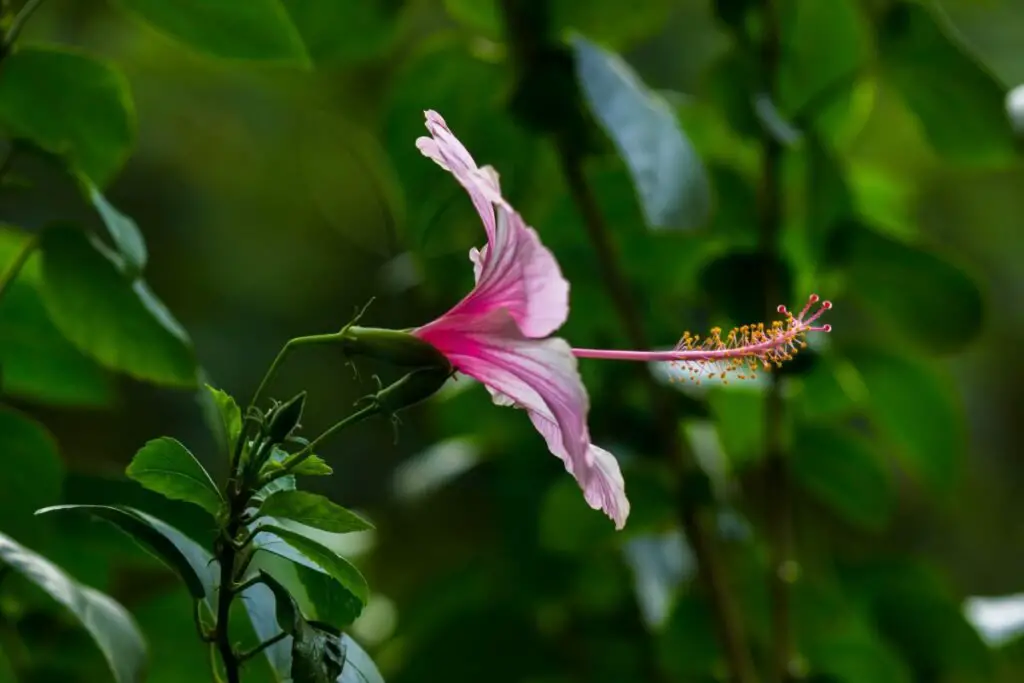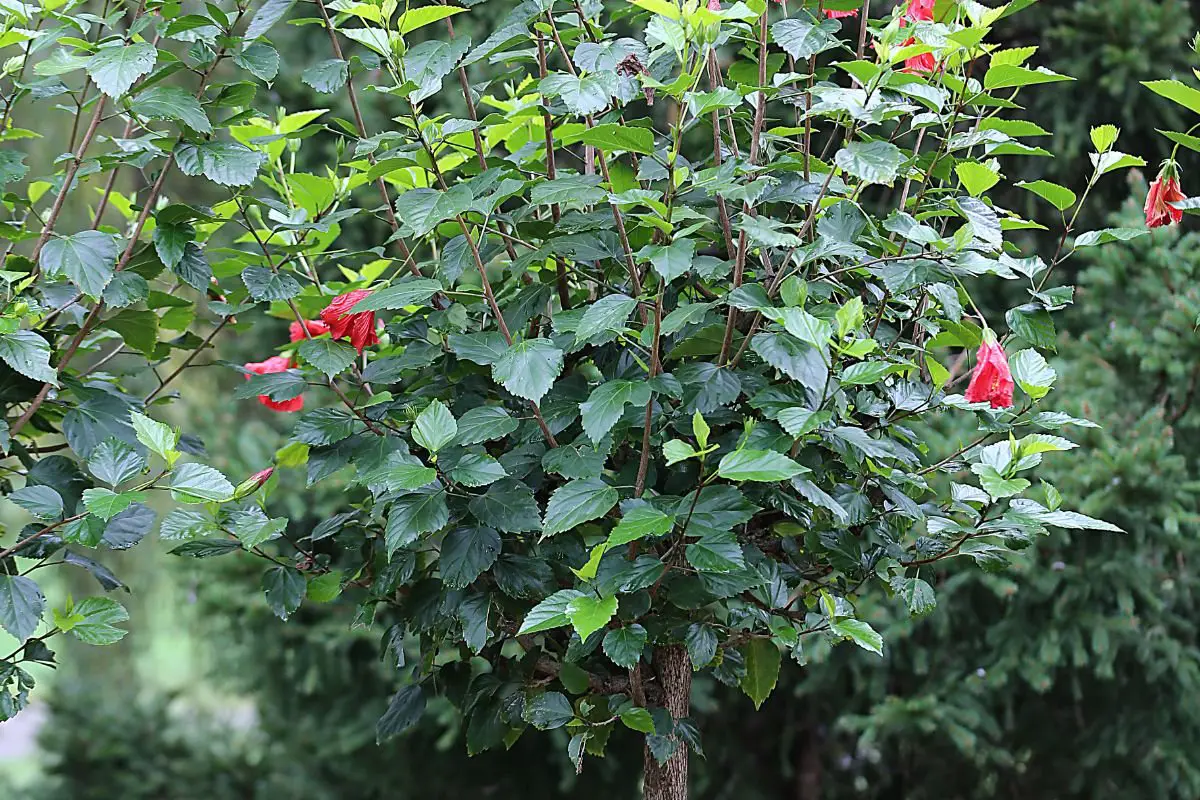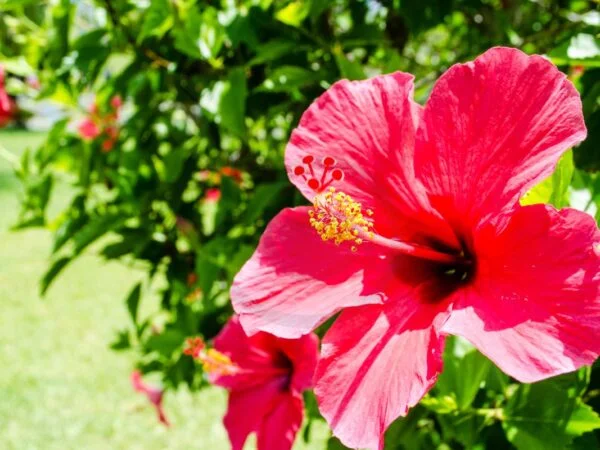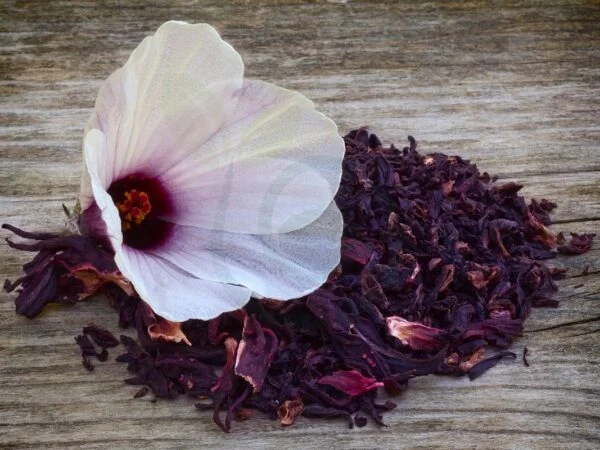Wondering how big hibiscus trees can grow? Get ready for a surprising contrast in sizes! From petite varieties perfect for small spaces to towering cultivars that can reach impressive heights, hibiscus trees offer a diverse range of growth potentials. Whether you're seeking a compact ornamental shrub or a majestic focal point in your garden, there's a hibiscus tree size to suit every landscape.
Curious to discover the full spectrum of hibiscus tree sizes and how to choose the right one for your outdoor space? Stay tuned as we delve into the fascinating world of hibiscus cultivation, exploring the factors influencing their growth, from stems to flowers, and sharing expert tips on nurturing these stunning botanical beauties. Get ready to unlock the secrets behind cultivating thriving hibiscus trees!
Key Takeaways
- Hibiscus trees can grow quite large, reaching heights of up to 15 feet or more, so consider the available space before planting.
- To ensure optimal growth, plant hibiscus trees in well-draining soil and a location that receives plenty of sunlight.
- Proper care, including regular watering, fertilization, and pruning, is essential for the health and longevity of hibiscus trees.
- There are various hibiscus varieties available, each with unique characteristics and blooming patterns to suit different preferences.
- Understanding the optimal growing zones for hibiscus trees is crucial for their successful cultivation and blooming.
- To enhance the growth of hibiscus trees, consider tips such as providing adequate water, nutrients, and protection from pests.
Hibiscus Tree Basics
Typical Sizes
Hibiscus trees typically reach heights of 8-15 feet and widths of 4-7 feet when fully mature. The size can vary slightly based on the specific hibiscus tree species. Understanding these typical sizes is crucial for planning your garden layout effectively. Some hibiscus varieties may grow taller or wider, so it's essential to research the specific type you have.
Growth Factors
Key factors influencing the growth of hibiscus trees include sunlight, water, soil quality, and temperature. Providing adequate sunlight, regular watering, well-draining soil, and maintaining suitable temperatures are vital for healthy growth. By ensuring these factors are optimized, you can promote optimal growth and flowering in your hibiscus trees.
Climate Impact
The growth and health of hibiscus trees are significantly affected by the climate they are exposed to. Hibiscus trees thrive in warm, tropical climates with consistent sunlight and humidity levels. Adjusting care routines such as watering frequency and protection from extreme weather conditions is crucial in regions with varying climates. Understanding your local climate conditions will help you tailor care practices accordingly.
Care Practices
To ensure the well-being of your hibiscus trees, it's important to follow essential care practices consistently. Regular pruning helps maintain shape and encourages new growth, while proper watering ensures hydration without waterlogging the roots. Fertilizing during the growing season provides essential nutrients for healthy development. Consistent care practices play a significant role in keeping your hibiscus trees vibrant and flourishing.
Planting Hibiscus Trees
Ground Tips
Plant hibiscus trees directly in the ground for optimal growth and stability. The benefits include better access to nutrients from the soil, promoting healthier and more robust tree development. Considerations involve selecting a suitable location with adequate sunlight and well-draining soil.
l preparation is crucial when planting hibiscus trees in the ground. Ensure the soil is rich in nutrients, well-aerated, and has good drainage to prevent waterlogging. Proper planting techniques such as digging a hole twice the size of the root ball and backfilling with fertile soil promote successful growth.
Planting hibiscus trees in the ground influences their growth and longevity significantly. With ample space for root expansion, these trees can thrive for many years, reaching their full potential in terms of size and blooming capacity.
Pot Recommendations
Growing hibiscus trees in pots or containers offers versatility and convenience. The advantages include mobility, allowing you to move the tree to different locations based on sunlight requirements or weather conditions. Pots also provide better control over soil quality and moisture levels.
When choosing pots for hibiscus trees, opt for sizes that accommodate root growth while preventing overcrowding. Select materials like terracotta or plastic that offer good insulation against temperature fluctuations. Adequate drainage holes are essential to prevent water accumulation, which can lead to root rot.
Enhance the aesthetic appeal of your hibiscus trees by exploring creative pot recommendations. Consider decorative pots that complement your outdoor space or add a pop of color to your patio or garden area. Incorporating unique designs or patterns can elevate the visual impact of your potted hibiscus plants.
Hibiscus Tree Care

Light Needs
Hibiscus trees require ample sunlight to thrive and produce vibrant blooms. Optimize light exposure for healthy growth.
Soil Requirements
The specific soil conditions crucial for hibiscus trees include optimal pH levels, proper drainage, and essential nutrients. Soil quality sustains foliage vibrancy.
Watering Practices
Maintain healthy hibiscus trees by adopting correct watering techniques. Balance watering frequency, soil moisture, and drainage for tree health.
Fertilization Guide
Fertilization is key for hibiscus growth and blooming. Understand fertilizer types, application methods, and customized plans.
Hibiscus Varieties
Tropical Types
Tropical hibiscus varieties, known for their vibrant blooms, can reach heights of up to 15 feet. These types thrive in warm climates and require regular watering and fertilization for optimal growth.
e popular tropical hibiscus cultivars include the Hawaiian Hibiscus and Chinese Hibiscus. These varieties boast large, colorful flowers that add a tropical flair to gardens and landscapes.
- Tropical hibiscus trees offer stunning blooms
- Regular care includes watering and fertilizing
Shrubs Overview
Hibiscus shrubs are compact plants that typically grow between 3 to 10 feet tall like a tree. These versatile plants are perfect for creating hedges, borders, or standalone ornamental features in gardens.
With proper pruning, hibiscus shrubs can be shaped into various forms, enhancing the visual appeal of outdoor spaces. They bloom profusely during the warmer months, attracting pollinators like bees and butterflies.
- Ideal for hedges or standalone features
- Pruning helps shape and enhance aesthetics
Deciduous Varieties
Deciduous hibiscus trees shed their leaves annually but produce showy flowers in abundance. These varieties can grow anywhere from 6 to 12 feet tall, adding a touch of elegance to any garden landscape.
The Rose of Sharon is a well-known deciduous hibiscus species loved for its large, trumpet-shaped flowers that bloom throughout the summer months. These trees require minimal maintenance and are relatively easy to grow.
- Deciduous hibiscus trees offer seasonal blooms
- Rose of Sharon is a popular deciduous variety
Optimal Growing Zones
Zone Identification
Hibiscus trees thrive in USDA hardiness zones 9 to 11, characterized by mild winters and hot summers. These zones encompass regions like Southern Florida, Southern Texas, and parts of California.
In these zones, hibiscus trees can reach heights of up to 15 feet, creating a stunning focal point in gardens. The warm temperatures and extended growing seasons provide ideal conditions for their growth.
Climate Suitability
The tropical climate found in these optimal growing zones is perfect for hibiscus trees. They require plenty of sunlight, warmth, and humidity to flourish and produce vibrant blooms year-round.
With the right care and attention to watering and fertilizing, hibiscus trees can grow vigorously in these climates. They add a touch of exotic beauty to any garden or landscape.
Common Problems
Pest Infestations
Mealybugs
Mealybugs are tiny insects that feed on hibiscus plants, causing damage by sucking sap from the leaves. They leave behind a sticky substance called honeydew, attracting ants and promoting mold growth. To control mealybug infestations, use insecticidal soap or neem oil.
Rust Issues
Rust is a fungal disease that appears as orange-brown spots on hibiscus leaves. It thrives in warm, humid conditions and can weaken the plant over time. To prevent rust issues, ensure good air circulation around the plant and avoid overhead watering.
Disease Management
Powdery Mildew
Powdery mildew is a common fungal disease affecting hibiscus plants, characterized by a white powdery coating on leaves. It thrives in warm, dry conditions and can spread rapidly if not addressed promptly. To combat powdery mildew, remove and destroy affected plant parts and apply fungicides if necessary.
Yellowing Leaves
Yellowing leaves on hibiscus plants can be a sign of various issues such as nutrient deficiencies, overwatering, or pests. Ensure the plant is receiving adequate sunlight and water it only when the top inch of soil feels dry to touch. Consider fertilizing with a balanced fertilizer to address nutrient deficiencies.
Growth Enhancement Tips
Temperature Control
Hibiscus trees thrive in temperatures between 60-90°F. Ensure they're not exposed to frost, which can harm their growth.
Maintain consistent indoor temperatures during winter to protect your hibiscus from cold snaps that stunt growth.
Avoid sudden temperature changes, as hibiscus Faust "shock," hindering their development and blooming potential.
Adequate Light Exposure
Place your hibiscus where it receives 6-8 hours of sunlight daily. Insufficient light can lead to leggy growth and fewer blooms.
Consider using grow lights if natural light is lacking, especially during winter months when daylight hours are shorter.
Rotate your plant regularly to ensure all sides receive equal light exposure for balanced growth and flowering.
Landscaping with Hibiscus
Design Ideas
Weeping hibiscus can add a unique touch to your landscape with their elegant cascading branches. These varieties are perfect for creating a focal point in your garden, especially when placed near pathways or as standalone specimens. Red flowers on weeping hibiscus trees can provide a striking contrast against green foliage, adding vibrancy to the overall design.
Consider planting wide-flowered hibiscus varieties to create a bold statement in your garden. These types of hibiscus produce large blooms that can catch the eye from afar, making them ideal for enhancing the visual appeal of your outdoor space. Pairing white flowers with other colorful plants can create a serene and peaceful atmosphere in your garden.
Variety Selection
When selecting hibiscus varieties for landscaping, consider factors like bloom color, size, and growth habits. Choose flowering hibiscus species that complement the overall color scheme of your garden. Opt for blooms that will bloom profusely during the growing season, ensuring a continuous display of color.
Integrate different flowering hibiscus varieties to create visual interest and diversity in your landscape design. Mix and match red flowers with other hues to create a vibrant and dynamic garden palette. Incorporating various flowers can also attract pollinators and beneficial insects to your garden, promoting biodiversity.
Choosing the Right Hibiscus
Garden Space Consideration
When planting hibiscus, consider the space needed for their growth as they can reach up to 15 feet in height. Ensure ample room for proper development.
Hibiscus trees require adequate spacing between plants to prevent overcrowding and promote healthy growth. A spacing of 3-6 feet is ideal.
To allow sufficient sunlight and airflow, plant hibiscus trees at a distance from other structures or plants. This ensures optimal growth conditions.
Growth Expectations
Hibiscus trees can grow up to 10-15 feet tall and 5-8 feet wide, depending on the variety and care provided.
Regular pruning can help control the size of hibiscus trees, promoting bushier growth and maintaining a manageable height in your garden.
Consider dwarf varieties if you have limited space, as they typically reach heights of around 3-4 feet, perfect for smaller gardens.
Summary
You've learned all about hibiscus trees, from planting and care to common problems and growth tips. Understanding the varieties and optimal growing zones can help you create a vibrant hibiscus landscape. Remember to choose the right hibiscus for your garden and enhance its growth with our expert tips.
o ahead and plant your hibiscus tree with confidence, armed with the knowledge to nurture it into a stunning addition to your outdoor space. Share your newfound expertise with fellow gardening enthusiasts and watch your hibiscus bloom beautifully!
Frequently Asked Questions
How big do hibiscus trees typically get?
Hibiscus trees can grow anywhere from 3 to 15 feet tall, depending on the variety and growing conditions. Ensure proper spacing when planting to accommodate their potential size.
Can hibiscus trees survive in cold climates?
Most hibiscus varieties are sensitive to frost and prefer warm temperatures. Consider bringing them indoors or providing protection during colder months if you live in a region with freezing winters.
What are common issues that affect hibiscus trees?
Common problems include pests like aphids and whiteflies, diseases such as powdery mildew, and issues like yellowing leaves due to overwatering. Regular inspection and proper care can help prevent these problems.
How can I enhance the growth of my hibiscus tree?
To promote healthy growth, ensure your hibiscus receives adequate sunlight, water consistently but avoid overwatering, fertilize appropriately during the growing season, prune for shape and airflow, and monitor for pests or diseases.
Which hibiscus variety is best for landscaping purposes?
For landscaping, consider varieties like Hibiscus syriacus (Rose of Sharon) or Hibiscus rosa-sinensis (Tropical Hibiscus) known for their vibrant blooms and versatility in garden designs. Choose a variety that suits your climate and aesthetic preferences.
Image Source: Paid image from CANVA




